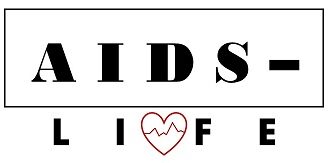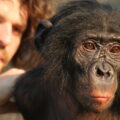Manifestation of HIV infection in the oral cavity
HIV-related oral diseases affect a significant proportion of patients and are often misdiagnosed or inadequately treated. Common or known HIV-associated oral diseases include xerostomia, candidiasis, oral hairy leukoplakia, periodontal diseases such as linear gingival erythema and necrotizing ulcerative periodontitis, etc. That is why regular visits to the dentist are necessary for the timely detection and treatment of oral manifestations of HIV infection or AIDS.
A little about HIV and AIDS
The human immunodeficiency virus (HIV) was first reported in the United States in 1981. HIV is a virus that infects cells of the immune system, which protects the human body from disease. The virus destroys a type of white blood cell in the immune system called helper T cells and copies itself inside those cells. Helper T cells are also called CD4 cells.
Acquired immunodeficiency syndrome (AIDS) is a set of symptoms and infections caused by the HIV virus, which affects the immune system. AIDS is an acquired, not hereditary, infection.
Oral lesions may be an early clinical manifestation of HIV infection, as they are often symptoms of immune system suppression, and can be used for early testing, diagnosis and treatment of patients with HIV infection or AIDS.
Research has shown that more than 90% of people with HIV infection have at least one oral manifestation throughout the course of their illness. In cases where a person's HIV status is unknown, some oral lesions provide a clear indication of the presence of HIV infection.
However, the overall prevalence of oral manifestations of HIV infection has changed since the advent of highly active antiretroviral therapy (HAART) . Several studies have shown a reduction in the prevalence of herpes and periodontal disease by more than 30% after the introduction of HAART and in opportunistic infections associated with HIV infection.
Read more about highly active antiretroviral therapy, drugs and treatment regimens in our article
Symptoms of HIV infection in the oral cavity
HIV infection affects the entire body, including the oral cavity. According to statistics, manifestations of HIV infection in the oral cavity occur in 30–80% of patients.
Oral health is an important component of the overall health of the body during HIV infection. Awareness of oral diseases that can develop throughout the course of HIV infection and coordination of care between the primary care physician and dentist can improve a patient's overall health.
The manifestations of HIV infection in the oral cavity are divided into:
- Infections: bacterial, fungal, viral;
- Neoplasms: Kaposi's sarcoma, non-Hodgkin's lymphoma;
- Immune-mediated: severe aphthosis, necrotizing stomatitis;
- Other: parotid diseases, eating disorders, xerostomia;
- Oral manifestations as side effects of antiretroviral therapy.
Read about the side effects of antiretroviral therapy for HIV in our article
It is very important to understand that there is no specific oral lesion that is associated only with HIV or AIDS, but there are certain manifestations, such as oral candidiasis or oral hairy leukoplakia, which are very often associated and considered to be the defining diseases of HIV and AIDS , and are also included in the WHO (World Health Organization) clinical classification.
Oral diseases due to HIV infection
The range of oral manifestations of HIV and AIDS is very wide. Let's look at the most common manifestations of HIV infection in the oral cavity.
Oral candidiasis
Oral candidiasis is a fungal disease characterized by the appearance of white spots or plaques on the oral mucosa, slightly protruding above the level of the mucosa.
It is the most common intraoral lesion found in HIV-infected people. In African studies, the prevalence of oral candidiasis occurred in 15-80% of HIV-positive adults. The development of oral candidiasis in people with HIV infections is associated with a low CD4 lymphocyte count (less than 200 cells/ml), cigarette smoking and hard drug use.
Most often, people with HIV infection experience 3 forms of oral candidiasis:
- pseudomembranous candidiasis (appears as creamy white, cottage cheese-like plaques on the buccal mucosa, tongue, and other oral mucosal surfaces that can be rubbed off, leaving a red or bleeding surface);
- erythematous candidiasis (a red, flat, thin lesion on the dorsal surface of the tongue or on the hard/soft palate. Patients complain of a burning sensation in the mouth, especially when eating salty and spicy foods);
- angular cheilitis (erythema or cracks in the corners of the mouth. Angular cheilitis can occur together with erythematous or pseudomembranous candidiasis).
Oral candidiasis can spread to the pharynx, larynx and esophagus. Treatment of oral candidiasis depends on the clinical type, distribution, and severity of the infection. Local treatment is effective for limited and accessible lesions.
Oral hairy leukoplakia
Hairy leukoplakia is white thread-like formations on the lateral surface of the tongue, sometimes on the buccal mucosa, asymptomatic, and develops in 80% of cases in patients with AIDS.
The lesions typically appear as asymptomatic, white, vertical, corrugated, hair-like projections on the lateral borders of the tongue (bilaterally or unilaterally). Damage may extend to the dorsum of the tongue and the adjacent buccal mucosa. Unlike candidiasis, the lesion cannot be erased from the surface of the mucous membrane.
Oral hairy leukoplakia is more common in men than women and rare in children. In HIV-positive people, leukoplakia predicts a more rapid development of AIDS.
Kaposi's sarcoma
Kaposi's sarcoma is the most common malignancy found in patients with HIV and AIDS. The causative agent of Kaposi's sarcoma is the herpes virus. This disease is especially common among gay men and is rare in HIV-infected women.
Lesions are characterized by reddish, bluish or purple, single or multiple spots or nodules. They are visible on the roof of the mouth or gums and can ulcerate, and gum damage can lead to destruction of the underlying bone and loose teeth. A definitive diagnosis of Kaposi's sarcoma requires a biopsy and histological examination.
Therapy for intraoral Kaposi's sarcoma, the goal of which is to control the size and number of lesions, should be initiated at the earliest symptoms of the disease. If the patient has several small lesions (less than 1 cm), intralesional chemotherapy may be effective. Radiation therapy is required for large or multiple lesions.
Mouth ulcers
About 50% of people with HIV and AIDS experience inflammation of mouth ulcers. Inflammations can be classified into minor aphthous ulcers and major aphthous ulcers.
Small aphthous ulcers occur on non-keratinized mucosa and the frequency of their occurrence in patients with AIDS is no different from the frequency of occurrence in HIV-negative people. Minor aphthous ulcers are small, about 2-5 mm in diameter, usually covered by a whitish pseudomembrane and surrounded by an erythematous halo.
Large aphthous ulcers are commonly seen in AIDS patients with severe immunosuppression (median CD4 cell count of 100 cells/mL or lower). Large ulcers develop mainly on the lateral border of the tongue, soft palate, floor of the mouth, buccal mucosa and oropharynx (found on both keratinized and non-keratinized surfaces).
The ulcers resemble craters with raised edges and are covered with a white-yellowish pseudomembrane, more than 1 cm in diameter. These lesions are very painful and may not go away for several months, causing difficulty swallowing and chewing and impairment of speech.
Read more about the most dangerous complications and diseases of HIV infection in our article
The above list is not a complete picture of the manifestations that can be observed in people living with HIV, but only a part of the common manifestations of HIV infection in the oral cavity.




